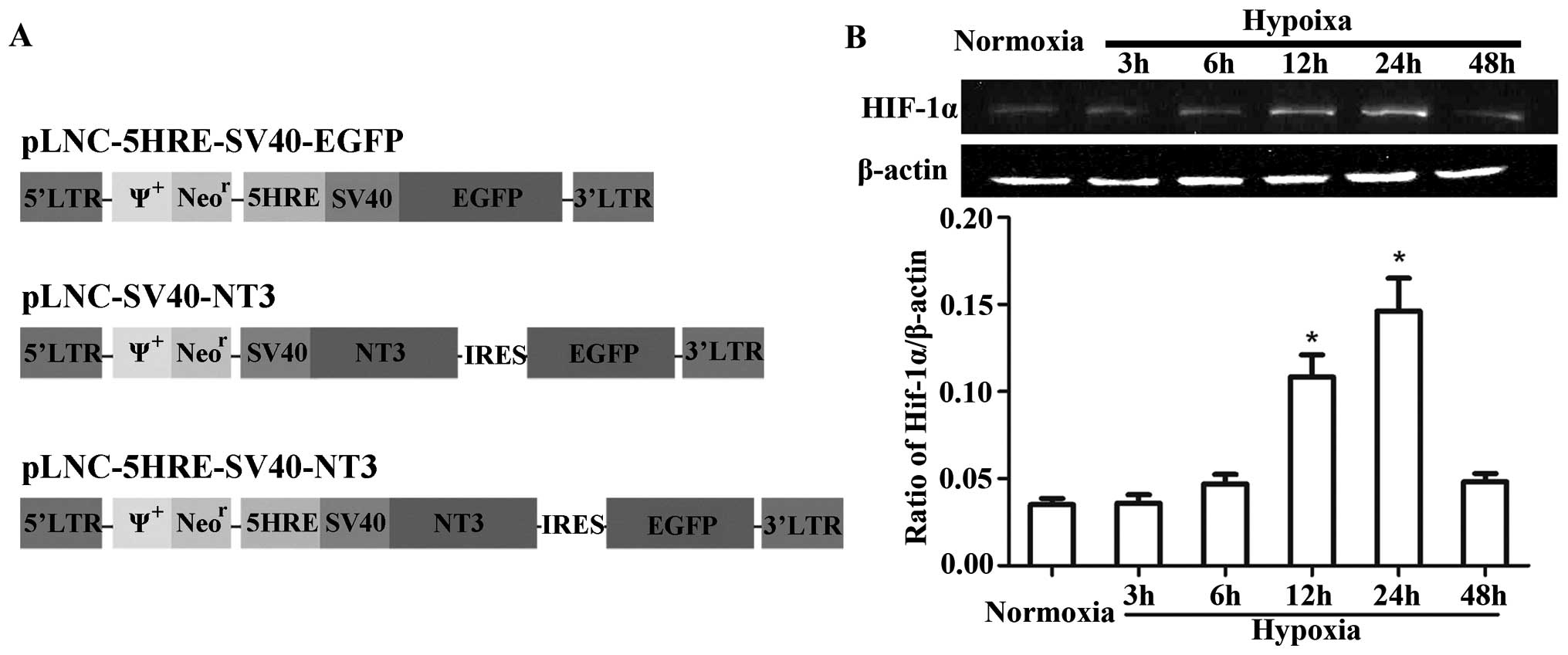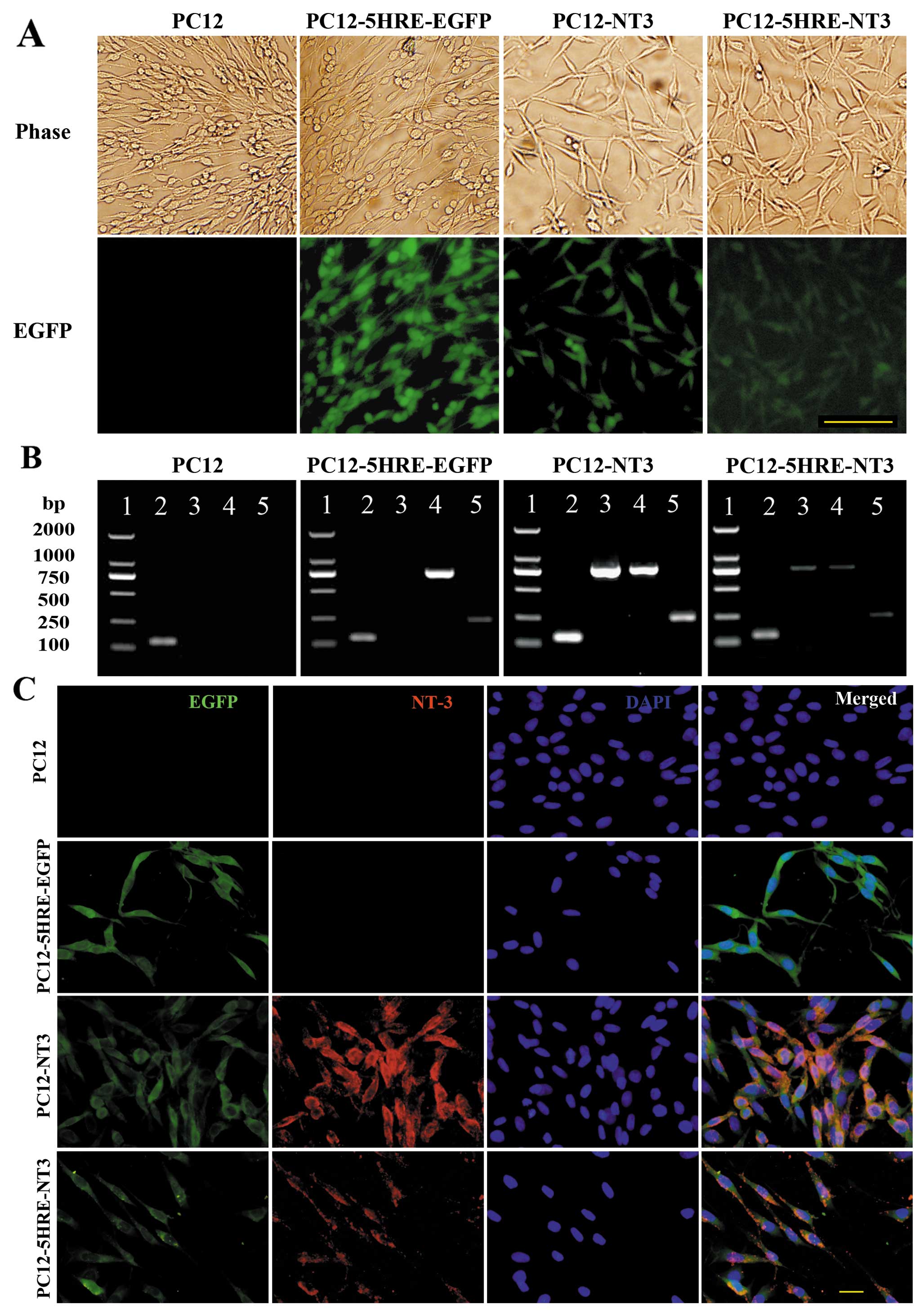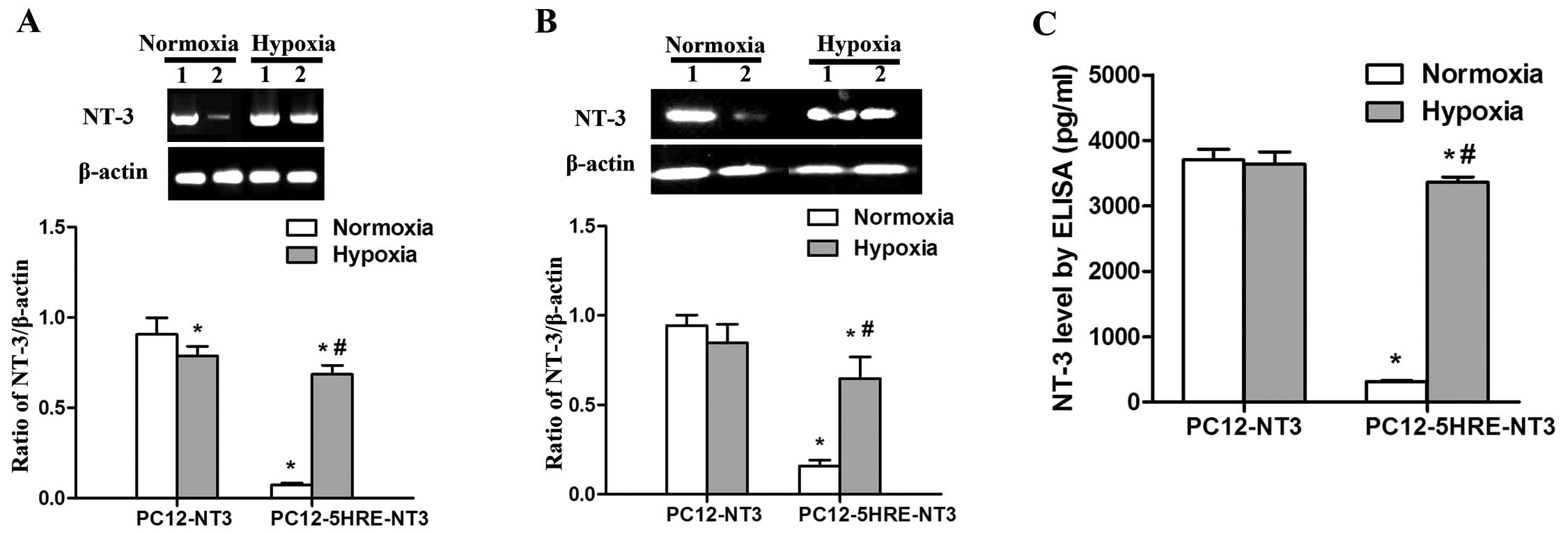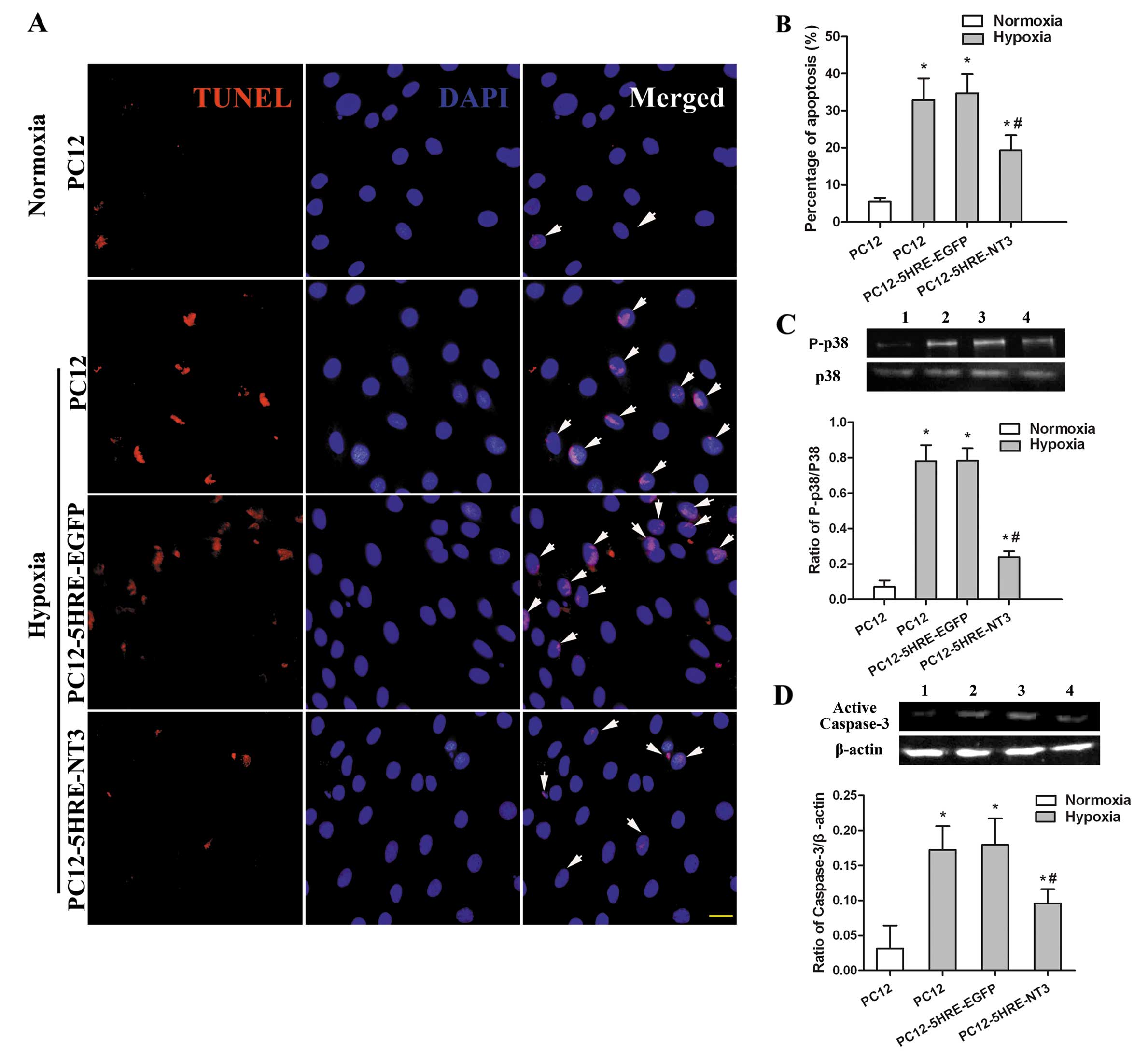Hypoxia-regulated neurotrophin-3 expression by multicopy hypoxia response elements reduces apoptosis in PC12 cells
- Authors:
- Published online on: September 6, 2012 https://doi.org/10.3892/ijmm.2012.1119
- Pages: 1173-1179
Metrics:
Total
Views: 0 (Spandidos Publications: | PMC Statistics:
)
Total PDF Downloads: 0 (Spandidos Publications: | PMC Statistics:
)
Abstract
We have previously reported that 5 copies of the hypoxia response element (HRE) can conditionally regulate brain-derived neurotrophic factor gene expression under hypoxic/ischemic conditions in mice. In the present study, we investigated the controlled expression of neurotrophin-3 (NT-3) by HRE under hypoxic conditions and determined the protective effects of conditionally expressed NT-3 on hypoxia-induced apoptosis in PC12 cells. Five copies of the HRE (5HRE) and the simian virus 40 minimal promoter (SV40mp) were employed to construct a cassette, and transfer of therapeutic gene, NT-3, into PC12 cells was achieved using a retroviral vector. Our results showed that the retroviral vector, pLNC-5HRE-NT3, was successfully constructed and transfected into PC12 cells. Compared with normal conditions, in which NT-3 was expressed at low levels, the expression of NT-3 significantly increased under hypoxic conditions in 5HRE-NT3 transgenic PC12 cells (P<0.05). By contrast, in NT-3 transgenic PC12 cells without HRE, we found no significant difference in NT-3 expression between the normoxic and hypoxic groups. The conditional adjustment of NT-3 expression by 5HRE significantly reduced apoptosis induced by hypoxia in 5HRE-NT3 transgenic PC12 cells (P<0.05) but not in 5HRE-enhanced green fluorescent protein (EGFP) transgenic PC12 cells and PC12 cells without gene transfer. In addition, the hypoxia-induced upregulation of both p38 and caspase-3 activities was suppressed in 5HRE-NT3 transgenic PC12 cells under hypoxic conditions (P<0.05). Taken together, these results demonstrate that 5HRE-SV40mp regulates NT-3 gene expression in response to hypoxia in PC12 cells. The data presented in this study may prove useful in future gene therapy studies for the treatment of ischemic diseases.














